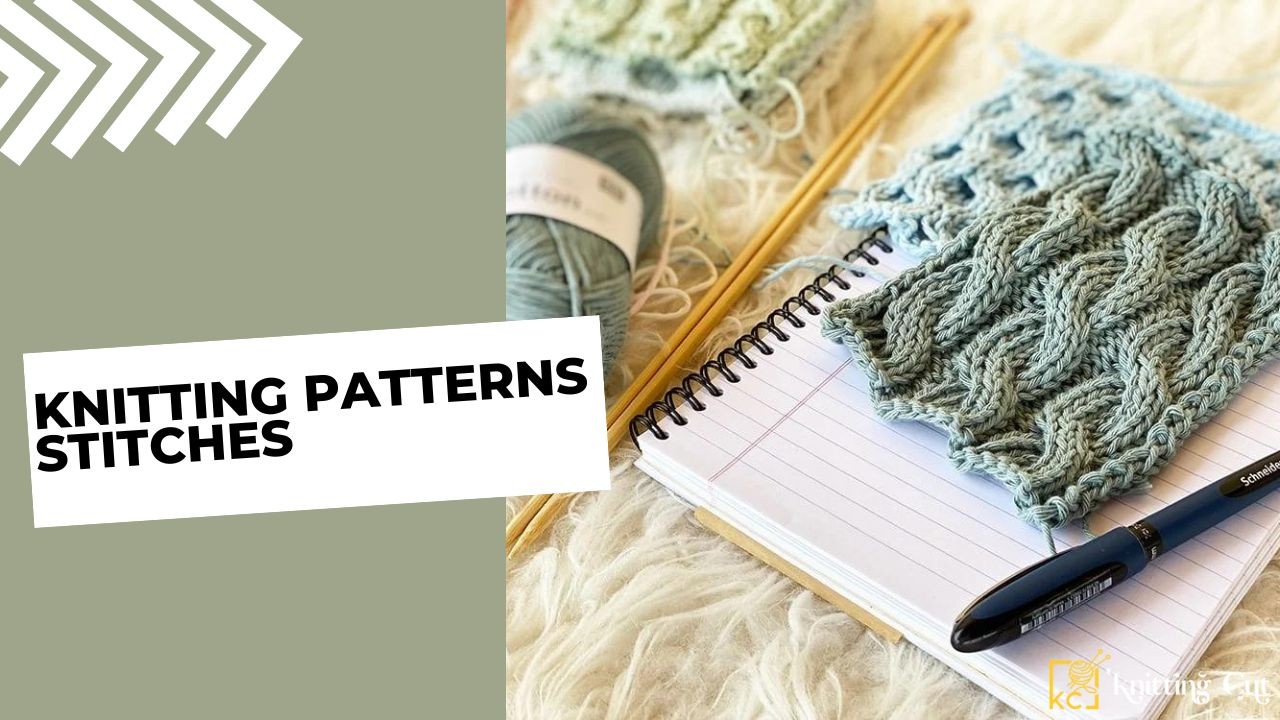Knitting is a craft that has been enjoyed for centuries, and it’s easy to see why. It offers a relaxing way to create beautiful garments and accessories with just some yarn, needles, and a little bit of know-how. Knitting patterns stitches are the building blocks of every knitted piece, as they determine the texture, shape, and overall appearance of the finished product.
There are countless knitting pattern stitches to choose from, ranging from simple knit and purl combinations to more complex lace or cable designs. Each stitch has its own unique characteristics that can be used to create intricate patterns or add visual interest to an otherwise plain piece.
Why Knitting Stitches Are Important?
Knitting patterns and stitches are fundamental to the knitting process, and understanding their importance can help you become a better knitter. While knitting is often viewed as a relaxing and meditative hobby, it requires precision and attention to detail when it comes to stitches. Each stitch contributes to the overall look and feel of a finished project, making them essential for creating successful designs.
One reason why knitting stitches are so important is that they affect the texture of your work. Different stitch patterns create different textures, from smooth stockinette stitch to bumpy garter stitch. Texture adds depth and interest to your projects, giving them character and personality. Additionally, understanding how stitches interact with each other can help you create intricate lace or cable designs that add complexity to your projects.
Basic Knitting Stitches
Knitting is a craft that has been around for centuries, and it continues to be popular today. Whether you are just starting out or have been knitting for years, it is important to know the basic stitches that form the foundation of many knitting patterns. These stitches include knit, purl, garter stitch, stockinette stitch, and rib stitch.
The knit stitch is one of the most basic knitting stitches. It consists of pulling a loop of yarn through another loop on the needle. The purl stitch is similar to the knit stitch but is worked in reverse. The garter stitch involves simply knitting every row and creates a bumpy texture that can be used for scarves or blankets. Stockinette stitch alternates between rows of knit and purl stitches and creates a smooth surface that can be used for sweaters or hats.
Also Read: Knitting Patterns Socks
Intermediate Knitting Stitches
Intermediate knitting stitches are a step up from basic stitches and offer a bit more complexity in terms of pattern and design. These types of stitches can also be used to create intricate designs and textures in your knitwear. Some popular intermediate knitting stitches include basketweave stitch, cable stitch, seed stitch, and ribbing stitch among others. In order to master these intermediate knitting stitches, knitters should first practice with simple patterns before moving on to more complex ones.
Advanced Knitting Stitches
Advanced knitting stitches are a great way to add some intricate detailing to your projects. With a plethora of patterns and techniques available, it is easy to get overwhelmed. However, with the right resources and guidance, learning advanced knitting stitches can be both fun and rewarding.
One popular technique for advanced knitters is lace knitting. Lace patterns use a combination of yarn-overs (YO) and decrease to create openwork designs that resemble delicate lace fabric. Another popular stitch pattern is cable knitting, which creates braided or twisted designs by crossing groups of knit or purl stitches over each other. Intarsia knitting is another technique that allows for the creation of complex color patterns by using multiple strands of different colored yarns in one row.
Finding the Perfect Pattern
When it comes to knitting, finding the perfect pattern can make all the difference. Whether you’re a beginner or an experienced knitter, choosing the right stitch pattern can help you create beautiful and unique pieces of clothing or home decor. With so many knitting pattern stitches available, it can be overwhelming to know where to start.
One way to find the perfect pattern is by considering your skill level. If you’re new to knitting, look for patterns that use basic stitches like garter stitch or stockinette stitch. As you gain more experience, you may want to try more complex patterns that incorporate cables or lacework. Additionally, consider what type of project you want to create a sweater will require different stitches than a scarf or hat.
Resources to Improve Your Skills
One of the best ways to improve your knitting skills is by practicing different stitches. There are hundreds of different types of stitches out there, from simple knit and purl stitches to more complex cable and lace patterns. By mastering these various stitch patterns, you can create intricate designs in your projects that will impress even the most experienced knitters.
Another excellent way to improve your knitting prowess is by exploring various sources of inspiration for new projects. You can find free patterns online or purchase books filled with exciting designs to try out. Additionally, attending workshops or joining local knitting groups can provide valuable opportunities for learning new techniques from other skilled knitters.
Conclusion
Knitting pattern stitches are the foundation of all knitting projects. They allow knitters to create intricate designs and textures with ease. By mastering these basic stitches, the possibilities for creating beautiful and unique pieces are endless. Whether you’re a beginner or an experienced knitter, there is always something new to learn and explore. So why not pick up your needles and try out a new stitch today? You never know what amazing creations you may come up with.
Also Read: Knitting Patterns For Beginners
